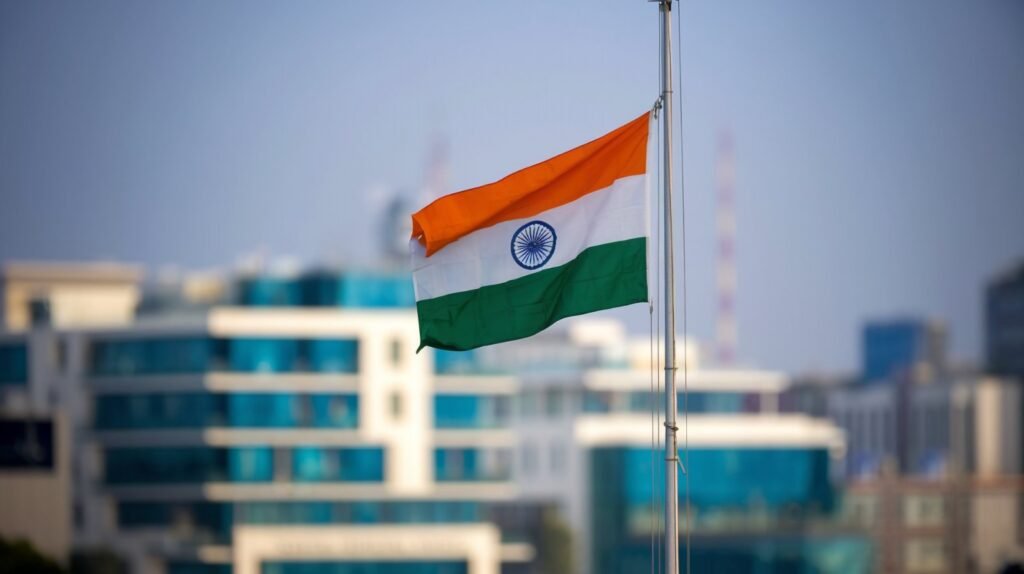India’s M&A Landscape in 2025: What, Why, When, How

Divyam Khandelwal
Intern - Investment & Research
What: Key Trends in H1 2025
India’s mergers and acquisitions (M&A) market showed remarkable resilience in the first half of 2025. Deal values touched nearly US$50–60 billion, with a strong tilt toward larger, strategic transactions. The number of deals moderated compared to last year, but the average deal size increased significantly, with at least ten transactions valued at over a billion dollars.
Domestic consolidation dominated, making up close to 85–90% of overall activity. Cross-border inbound investment slowed, while outbound acquisitions surged, driven by marquee transactions such as Tata Motors’ €3.8 billion acquisition of Iveco Group and Naveen Jindal’s multibillion-euro bid for ThyssenKrupp Steel Europe.
Sector-wise, Energy and Power led deal value, particularly renewables, which contributed the lion’s share of activity. India is now the fourth-largest renewable energy market globally, with an installed capacity of 220 GW representing nearly half of its total power mix. Consumer and retail also continued to attract steady deal flow, reflecting India’s expanding domestic demand. Financial services and healthcare rounded out the top sectors, with several large-scale consolidation plays.
Private equity activity remained healthy, with global and domestic funds deploying record dry powder. While the number of PE deals was stable, their value surged, reflecting a clear preference for backing larger and more strategic transactions.
Why: Strategic and Defensive Motivations
The motivations driving this new wave of M&A are both strategic and defensive.
On the strategic side, Indian corporates are consolidating to capture scale, improve efficiency, and expand into fast-growing segments. Insurance, retail, healthcare, and financial services are seeing consolidation to create national champions with stronger customer bases. In energy, conglomerates are aggressively buying into renewables to align with the country’s net-zero ambitions and to diversify into green hydrogen and clean-tech plays.
At the same time, many acquisitions are defensive responses to global shifts. Rising protectionism, tariff wars, and new regulatory barriers—like carbon border adjustment mechanisms in the EU—mean that access to international markets is no longer guaranteed. Indian firms are therefore acquiring overseas assets to hedge against deglobalization and to secure local manufacturing credentials.
For instance, Jindal Steel’s bid for ThyssenKrupp aims not just at scale but at positioning itself as Europe’s largest low-emission steel producer. Similarly, Tata Motors’ Iveco deal provides geographic diversification, reducing vulnerability to tariff shocks and regional disruptions. These moves reflect a broader strategic shift: cross-border M&A is no longer just about expansion, but about survival and resilience in a fragmenting global economy.
When: Timing and Comparative Context
This current wave has striking parallels—and important differences—with the one India experienced in 2006–07. Then, the likes of Tata Steel, Hindalco, and Tata Motors went on a global buying spree, fuelled by cheap credit and globalization optimism. Those acquisitions were offensive in nature, designed to capture markets, technology, and brands.
In contrast, today’s deals are unfolding against a very different backdrop. Rising interest rates in 2023–24 had slowed activity, but with inflation stabilizing and economic growth rebounding, corporates have regained confidence in 2025. Domestic consolidation is being fueled by mature sectors ripe for scale, such as renewables and healthcare, while outbound activity is being accelerated by geopolitical pressures.
Notably, outbound M&A by Indian companies surged by more than 65% in the past year, far outpacing the global average. Timing also reflects sector maturity: renewable energy, now a cornerstone of India’s economy, has moved from being a frontier market to a consolidation-driven arena. Companies are acting now to secure their positions in industries that will define the next decade.
How: Financing Mechanisms
Despite the momentum, a structural gap remains in India’s M&A playbook: financing. For over three decades, Indian banks have been barred from directly financing acquisitions. This rule, designed to protect depositors and avoid risky lending, has left corporations reliant on a patchwork of alternatives.
Acquirers often raise offshore loans, issue rupee bonds subscribed by foreign investors, or structure deals through foreign-owned subsidiaries. Domestically, NBFCs and Alternative Investment Funds (AIFs) are stepping in to provide debt capital, but usually at higher costs. Large promoters also turn to equity markets—via rights issues or preferential allotments—though this can dilute ownership.
Globally, the approach is very different. In the US and Europe, banks are integral to leveraged buyouts and acquisition financings, with regulatory guardrails ensuring risk control. China actively encourages its state banks to fund acquisitions that align with strategic policy goals. India’s outright ban leaves domestic lenders on the sidelines while foreign banks and funds capture lucrative deal-financing opportunities.
Allowing Indian banks limited, regulated participation in acquisition financing could significantly reduce costs, democratize access to capital, and keep value creation within the country. Without such reforms, India risks having world-class deal activity—but funded by foreign capital rather than domestic institutions.
Conclusion
India’s M&A landscape in 2025 is marked by resilience at home, ambition abroad, and a financing system still catching up with global norms. Domestic consolidation is reshaping core sectors, outbound acquisitions are providing a hedge against deglobalization, and private capital continues to fuel activity.
The big question for policymakers is whether India will update its financing framework to support this wave of deal-making. Without it, India’s corporates may continue to expand, but the real spoils of financing and value creation could accrue outside its borders.

